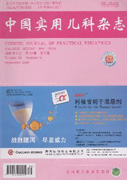Abstract Objective To explore the relation between climatic factor and dermatophagoides farinae positive rate of skin prick tests(SPT) on Chongming island. Methods The 290 children patient who were diagnosed with allergic diseases were examined by skin prick tests(SPT) with dermatophagoides farinae provided by Allergopharm Corporation from January 2005 to December 2008 on Chongming island,at the same time the climatic data were collected every day. The positive rate of dermatophagoides farinae examined by skin prick tests(SPT) of different months and seasons ,different monthly average air temperature and relative humidity before skin prick tests were analyzed.The data were analyzed by SPSS15.0. Results The general dermatophagoides farinae positive rate of 290 children with allergic diseases was 81.7%(238/290),and the positive rate of children with asthma and allergic rhinitis was higher than the others(χ2 = 21.51,P = 0.000). The positive rate of dermatophagoides farinae of different months and seasons were different. The positive rate from July to November,both summer and autumn,was higher than the others(Z = 2.789、P = 0.005 andχ2 = 11.959、P = 0.008).When the monthly average air temperature exceeded 18℃ and the monthly average relative humidity surpassed 70%; the positive rate of dermatophagoides farinae was higher than the others(χ2 = 6.643、P = 0.036 and χ2 = 5.138、P = 0.023). All of the differences were significant. Conclusion The general dermatophagoides farinae positive rate of SPT with allergic diseases is 81.7% on Chongming Island. The positive rate of dermatophagoides farinae of different months and seasons are different. The dermatophagoides farinae positive rate of SPT under different monthly average air temperature and relative humidity are different too. The climatic factor, such as air temperature and relative humidity, may impact the results on SPT of dermatophagoides farinae.

